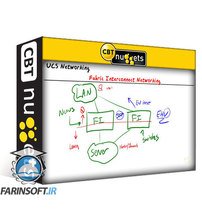جمع جزء: 1,134,000 تومان
- × 1 عدد: Mastering Google Ads with AI Integration - 189,000 تومان
- × 1 عدد: زیرساخت و OPS با سام نیومن: امنیت بومی و منبع باز با گای پودجاری - 189,000 تومان
- × 1 عدد: PROBLEM SOLVING USING PYTHON - 189,000 تومان
- × 1 عدد: Practical Home Automation Using Node-RED and Raspberry Pi - 189,000 تومان
- × 1 عدد: TypeScript - Very Informative - 2025 - 189,000 تومان
- × 1 عدد: Node.js: Building Scalable and High-Performance Applications - 189,000 تومان










--Verify-Data-Path-Virtualization-Technologies-main-resized.jpg)

--Explain-The-Hierarchical-Network-Model-main-resized.jpg)
